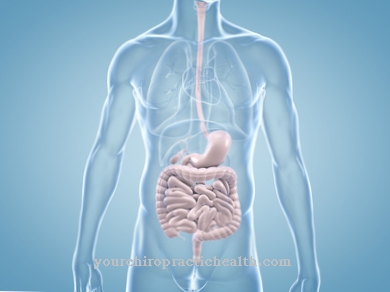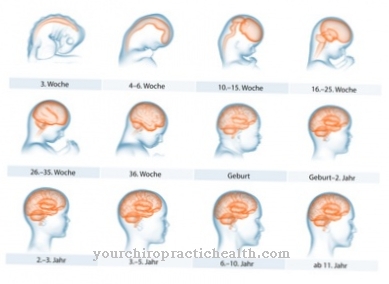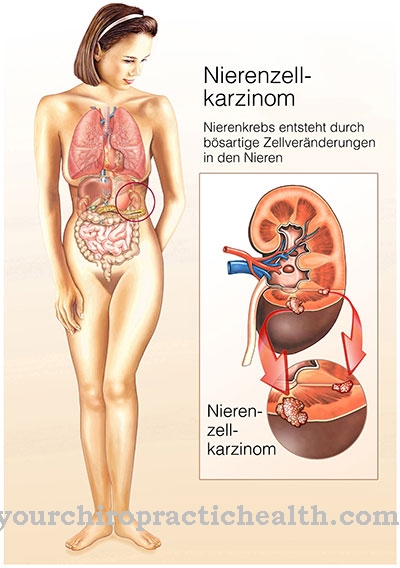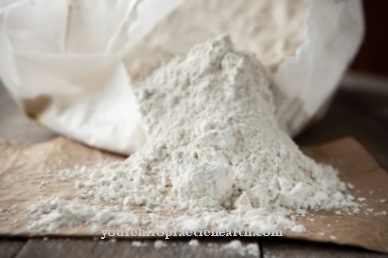In the Dyschezia it is a defecation disorder that is due to a coordination disorder of the anal sphincter. Although the patients feel an urge to defecate, they have problems defecating. The primary cause of the muscular coordination disorder determines the treatment.
What is dyschezia?

© nmfotograf - stock.adobe.com
The anal sphincter or sphincter is a ring-shaped muscle that completely seals the bowel. The forward and backward flow of digested food is prevented by the muscle. The sphincter is made up of smooth muscles and is therefore only accessible to voluntary activity in small parts.
Nevertheless, like any other muscle, the anal sphincter can be affected by coordination disorders. In most cases coordination disorders of the muscles are accompanied by a coordinative weakness of the entire pelvic floor muscles. The so-called dyschezia is a coordination disorder of the anal sphincter that leads to difficulties in defecation.
Those affected feel the urge to defecate, but cannot empty themselves regularly because of the coordinative disorder of the muscle. The primary cause of the inability to defecate may be related to various diseases in the context of dyschezia. The dyschezia is thus only a symptom, not the primary disease itself.
causes
During defecation, the pressure within the rectum increases and the external sphincter muscle relaxes at the same time. Decreased rectal contraction or an increase in the tone of the sphincter disrupt this process and cause dyschezia. The phenomenon is often based on a past rectal prolapse, i.e. intussusception of the rectal wall that occurred in the past.
However, the phenomenon can also indicate a wider range of illnesses, such as Hirschsprung's disease or irritable bowel syndrome. Dyschezia is just as common as a result of hemorrhoidal diseases, anal fissures or enema. In individual cases, the symptoms of dyschezia also occur in women depending on the cycle.
In this case, endometriosis between the vagina and rectum is usually the cause. General pelvic floor problems are usually not a cause of dyschezia, but can accompany the phenomenon. In many cases, patients with dyschezia are also those who frequently suppress their voiding reflex. In addition, the voiding disorder has often been observed in patients who have received an enema regularly in the past.
You can find your medication here
➔ Medication for constipation and intestinal problemsSymptoms, ailments & signs
Patients with dyschezia experience more or less pain when defecating. The quality of the passed stool alternates between diarrhea and constipation. Those affected often experience severe flatulence. Spasms sometimes occur in the sphincter muscle. In particularly severe cases, the urge to stool itself causes pain, which is then referred to as tenesmen.
In individual cases there is also nausea, i.e. a feeling of nausea from the gastrointestinal tract that is accompanied by nausea. In almost all cases, the pelvic floor muscles are affected by the coordination disorder of the anal sphincter. All other accompanying symptoms of dyschezia depend on the primary cause in the individual case. This also applies to the course of the symptoms.
In the case of causal endometriosis between the vagina and rectum, for example, the symptoms do not persist, but are cyclical and change during the female cycle. In individual cases, patients with dyschezia also suffer from a rectocele or enterocele. However, this phenomenon is neither a binding diagnostic criterion nor is it causally significant.
diagnosis
To diagnose dyschezia, an examination of the pelvic area and rectum is arranged to clarify the hypertension of the pelvic muscles and the anal muscles. The doctor usually finds the first signs of dyschezia in the anamnesis, for example a recessed rectal colps or a disease such as Hirschsprung's disease.
In addition to checking the tone of the muscles in the pelvic area, the doctor usually orders defecation proctography to confirm the diagnosis of dyschezia. Anorectal manometry or balloon expulsion can also help confirm the diagnosis. The diagnosis is attributed to a primary disease. The prognosis for the patient depends on this primary cause.
Complications
In dyschezia there are usually very unpleasant complaints and complications. Even if the person concerned feels the urge to empty the bowel, the disorder prevents them from moving the sphincter directly. This disorder can lead not only to physical, but also to severe psychological depression. Most often, bloating and diarrhea also occur.
The sphincter muscle hurts after every bowel movement. This pain usually increases when the person has to go to the toilet because of the increased diarrhea. Complications mainly arise when people use laxatives more often.
These drugs can trigger addictive behavior and are relatively unhealthy for the human body. They should only be used in emergencies. As a rule, treatment is based on the underlying disease. Surgical intervention can also be performed to eliminate complications of the sphincter muscle.
Should there be psychological complaints due to the dyschezia, a psychologist can be consulted at the same time. Anxiety or panic attacks often occur. These can usually be treated relatively well. The disease does not reduce life expectancy.
When should you go to the doctor?
If discomfort occurs again and again during bowel movements, the family doctor or a gastroenterologist should be consulted. The typical signs of dyschezia - including severe gas, diarrhea, constipation and pain - always require medical clarification. Otherwise, further complications can occur, which are usually associated with a rapid decrease in quality of life for those affected. Therefore, the first signs of dyschezia should lead to the doctor.
If the diarrhea causes increasing pain during bowel movements, this must be treated immediately by a gastroenterologist. Patients with an existing gastrointestinal disease as well as the elderly and infants should immediately see a doctor or pediatrician with a dyschezia.
In order to exclude a serious course of the disease, the disorder of defecation must be treated comprehensively. Good aftercare is then indicated. If the dyschezia is accompanied by psychological problems, a psychologist can be consulted. The anxiety and panic attacks that often occur are as unproblematic as the disease itself if treated quickly.
Doctors & therapists in your area
Treatment & Therapy
Patients often use laxatives for the symptomatic treatment of dyschezia. Not only are laxatives addictive, but use in dyschezia is unsatisfactory and in no way eliminates the primary cause. In order to cure the dyschezia in the long term, the cause of the symptoms must be eliminated. A causal treatment is clearly preferred to symptomatic therapy.
The treatment of patients with dyschezia therefore depends largely on the primary cause. In the case of extensive recto-vaginal endometriosis, for example, invasive procedures are available to eliminate the cause. In this case, operations should always be considered in order to provide permanent relief. Surgery is also usually the therapy of choice for patients with Hirschsprung's disease.
Symptomatic treatment options for patients with dyschezia usually amount to biofeedback, regardless of the disease. With this method, at least short-term improvements in the symptoms can be achieved. In the past, the experimental administration of laxatives was also tried for symptomatic therapy. However, this approach could achieve significantly fewer improvements than the biofeedback method.
Outlook & forecast
The prognosis of dyschezia depends on the causal disease. If the symptoms are tied to the female cycle, spontaneous healing always occurs within a few days. With the absence of menstrual bleeding in the menopause, permanent healing and freedom from symptoms are established in the further course.
The prognosis is less favorable for chronic or psychological causes. Without therapy, symptoms that last for several years often occur, which are usually variable and fluctuate in intensity. If therapy is used for an underlying mental illness, the healing process can take several months to years. In many cases, symptom relief is seen once the patient is ready to work on their emotional issues and bring about change.
In support of this, the person affected can have a positive influence on their health development through an optimal and healthy intake of food. Pollutants such as alcohol and nicotine should be avoided, as should particularly fatty or harmful foods.
In diseases such as hemorrhoids or a prolapse, a good prognosis of dyschezia is given after medical care or surgery. After the wound healing process, the symptoms subside and the bowel movement can resume its natural activity.
You can find your medication here
➔ Medication for constipation and intestinal problemsprevention
Dyschezia can only be prevented in moderation. A preventive measure consists, for example, in defecating as quickly as possible after the urge to defecate. In addition, all preventive measures for the prophylaxis of primary diseases such as hemorrhoids and rectal prolapse should be observed in order not to develop dyschezia in the future.
Aftercare
In the case of dyschezia, the person affected is primarily dependent on a comprehensive and, above all, on an early diagnosis so that the symptoms do not worsen further or other complications occur. As a rule, self-healing cannot occur, so treatment by a doctor is essential for this disease. Whether the disease can be treated easily depends mostly on the exact underlying disease, so that generally no general predictions can be made.
Usually the dyschezia can be treated with the help of laxatives. However, a maximum dose should be observed. If the symptoms of dyschezia persist, a doctor must be consulted in any case, as otherwise permanent use of the laxative can cause damage. In some cases, surgical interventions are also necessary, which can permanently alleviate the symptoms.
After such an operation, the person affected is definitely dependent on bed rest. You should refrain from exertion or other physical and stressful activities. In most cases, the dyschezia does not have a negative impact on the person's life expectancy.
You can do that yourself
Dyschezia can have a wide variety of causes. What the patient can do to improve his or her condition depends on what triggered the disorder. Anyone who discovers the first signs of defecation disorder should definitely consult a doctor immediately. Under no circumstances should the disease be treated by oneself, as inadequate therapy can result in considerable complications.
If the dyschezia is due to irritable bowel syndrome, a food intolerance can be the trigger. The patient should then have an allergy test done and also keep a food diary. Over a period of several weeks it can be determined whether the irritable bowel attacks are close to the consumption of certain foods.
If the irritable bowel and the resulting dyschezia alternate with diarrhea and constipation, this can also be positively influenced by an appropriate diet. While the patient is constipated, high fiber, light laxative foods should be consumed. These include, for example, flea seeds or dried fruit. If the patient suffers from diarrhea, on the other hand, a slightly constipating diet is indicated. This effect can be achieved very well with bananas.
Dyschezia is often accompanied by flatulence and acute cramps. In these cases, a hot water bottle that is placed on the stomach can help. A gentle, circular massage around the navel also provides relief for many patients.


.jpg)


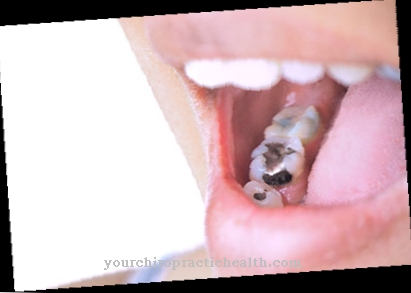
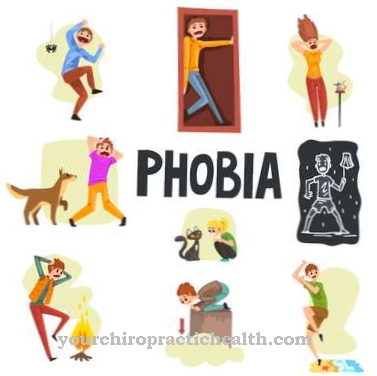



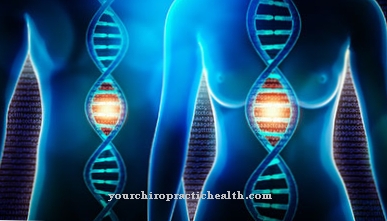
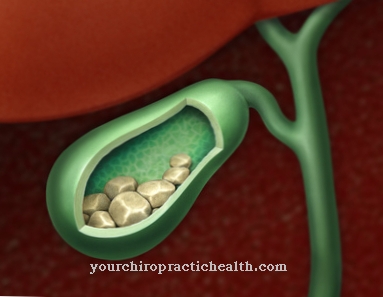


.jpg)
